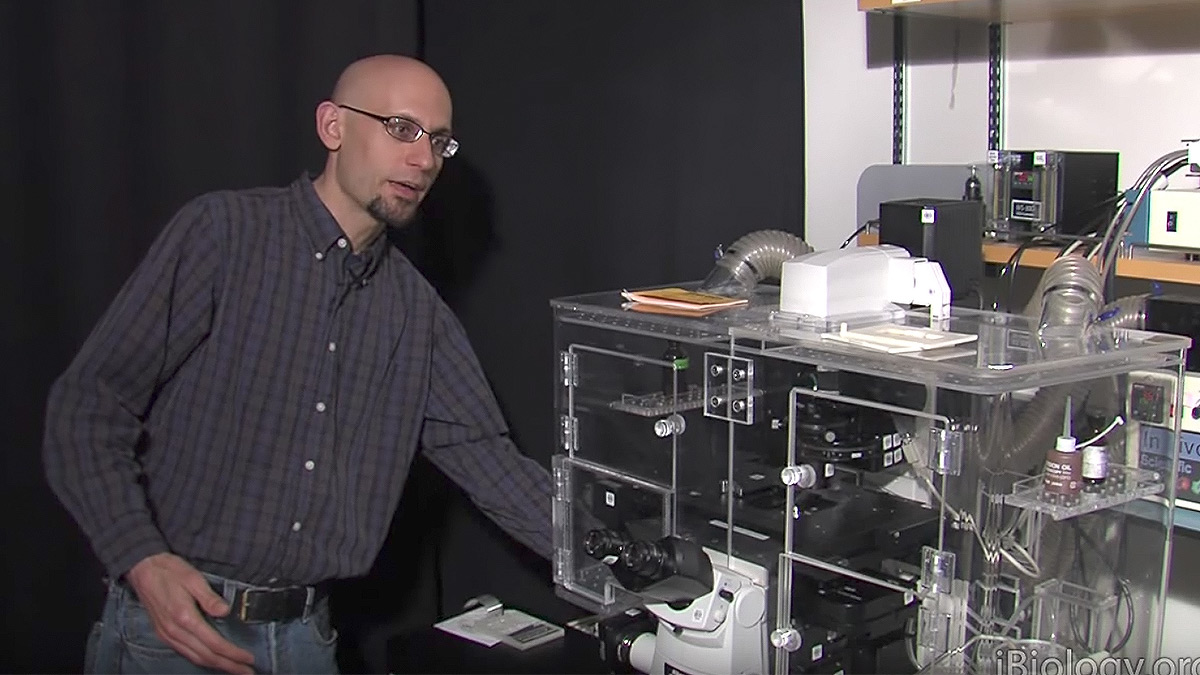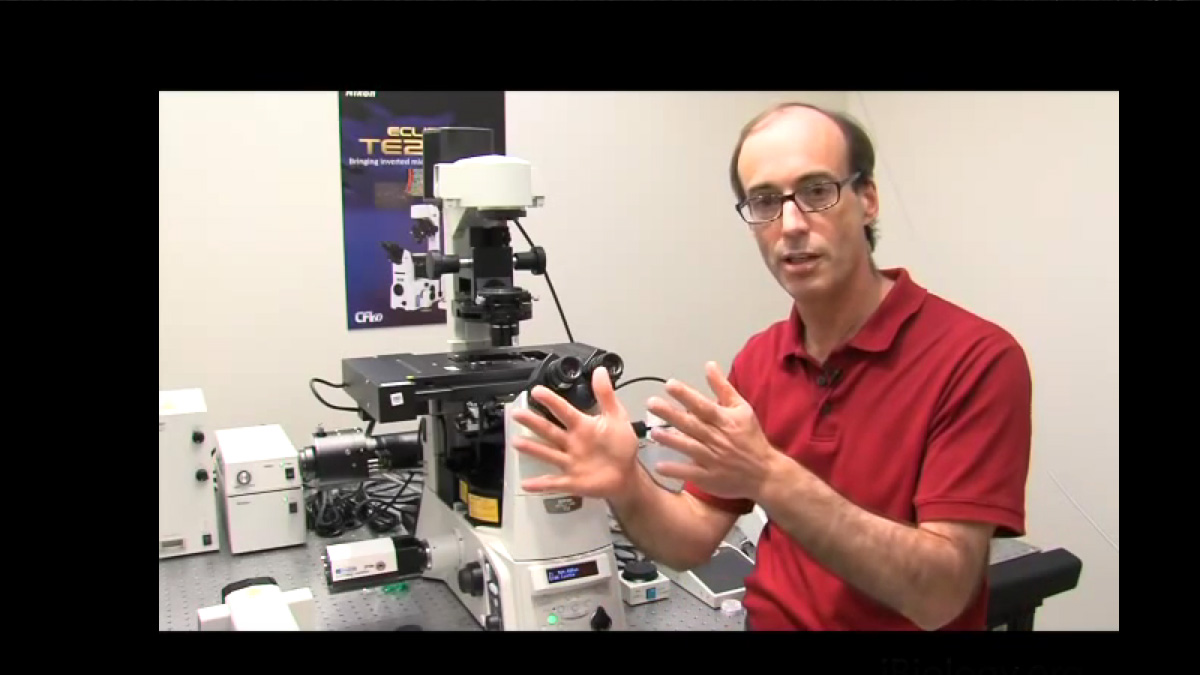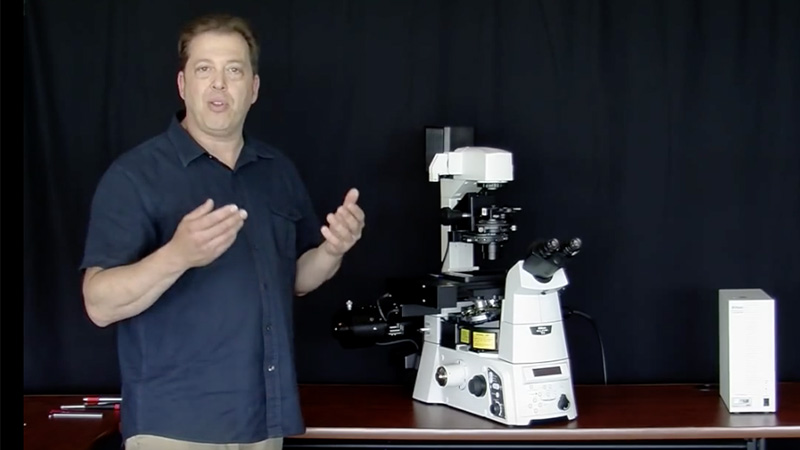Talk Overview
Taking apart a microscope helps you discover all the important optical components and get a better understanding of how things work. It is not always practical to do this yourself, therefore, have a look at this video to see the internals of the ASI RAMM microscope.
Questions
- What component is missing in this ASI microscope
- Condenser
- Eye Pieces
- Field Diaphragm
- Neutral density filters
- In this microscope, the illumination sources are:
- Lasers
- Metal halide lamps
- LEDs
- All of the above
- In the illumination path,
- The collector lens was adjusted to focus the light on the field diaphragm
- The condenser aperture is not present in this simple microscope
- A slider with neutral density filter is placed between the condenser diaphragm and condenser lens
- Adjusting the field diaphragm alters the cone angle of illumination.
- Which of the following statements is true:
- The tube lens is placed after the objective lens and before the fluorescence filter cube
- A prism (mirror) directs the trans-illuminating light to the camera port
- In this microscope, fluorescence is excited by trans-illumination from above and the excitation and emission light are separated by filters
- The tube lens is located within the camera C-mount
Answers
View AnswersSpeaker Bio
Nico Stuurman

Nico Stuurman is a Research Specialist at the University of California, San Francisco, in the lab of Ron Vale. Nico combines his expertise in computer programming and microscopy to advance many projects including the Open Source software, Micro-Manager. Continue Reading









Leave a Reply